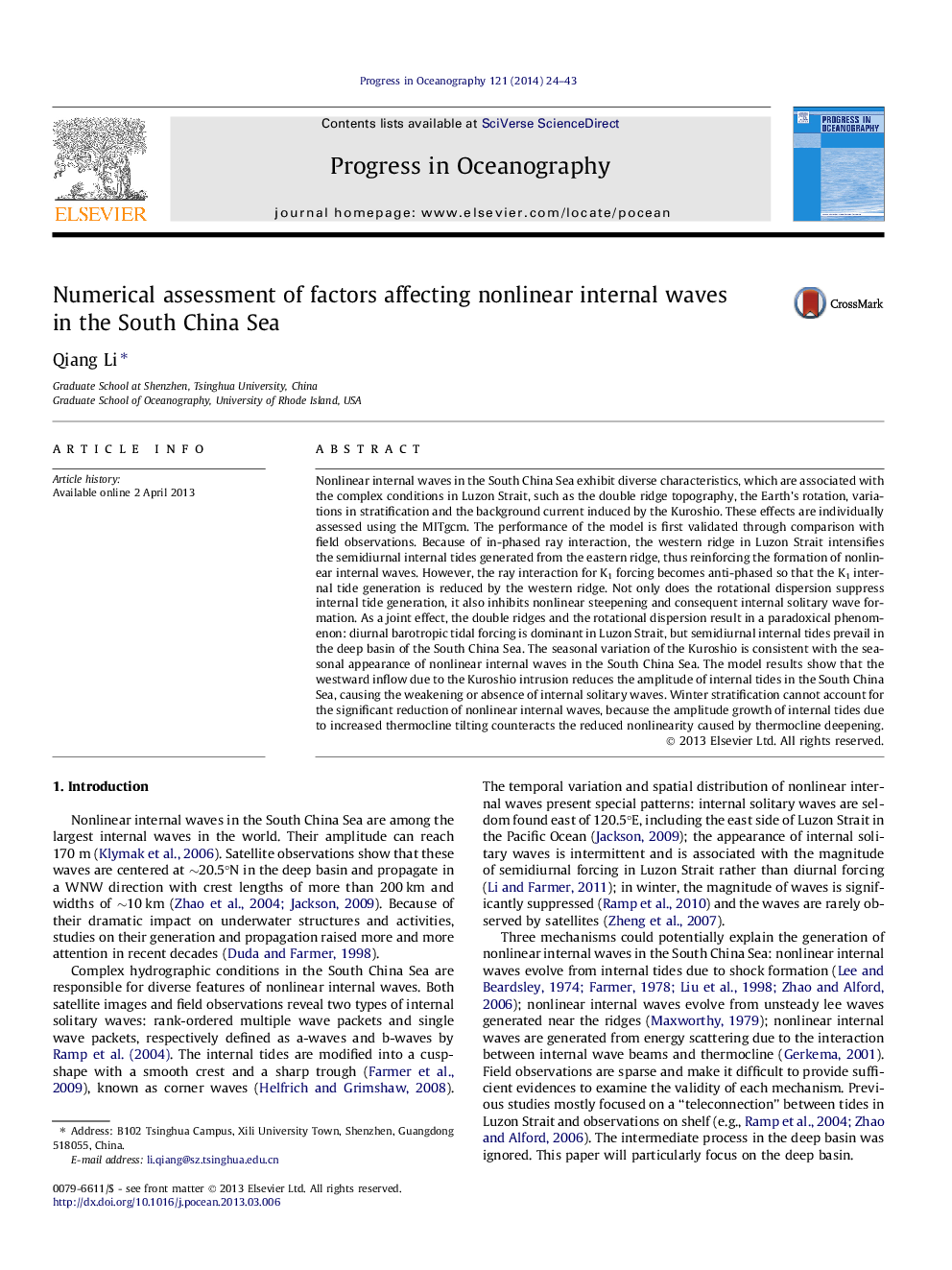| Article ID | Journal | Published Year | Pages | File Type |
|---|---|---|---|---|
| 4553047 | Progress in Oceanography | 2014 | 20 Pages |
Highlight•·Factors affecting nonlinear internal waves are individually modeled using the MITgcm.•·The double ridges intensify/reduce the semidiurnal/diurnal internal tide generation.•·Rotation inhibits the generation and nonlinear evolution of diurnal internal tides.•·The Kuroshio intrusion suppresses the nonlinear internal wave generation in winter.•·Winter stratification cannot account for the significant reduction of internal waves.
Nonlinear internal waves in the South China Sea exhibit diverse characteristics, which are associated with the complex conditions in Luzon Strait, such as the double ridge topography, the Earth’s rotation, variations in stratification and the background current induced by the Kuroshio. These effects are individually assessed using the MITgcm. The performance of the model is first validated through comparison with field observations. Because of in-phased ray interaction, the western ridge in Luzon Strait intensifies the semidiurnal internal tides generated from the eastern ridge, thus reinforcing the formation of nonlinear internal waves. However, the ray interaction for K1 forcing becomes anti-phased so that the K1 internal tide generation is reduced by the western ridge. Not only does the rotational dispersion suppress internal tide generation, it also inhibits nonlinear steepening and consequent internal solitary wave formation. As a joint effect, the double ridges and the rotational dispersion result in a paradoxical phenomenon: diurnal barotropic tidal forcing is dominant in Luzon Strait, but semidiurnal internal tides prevail in the deep basin of the South China Sea. The seasonal variation of the Kuroshio is consistent with the seasonal appearance of nonlinear internal waves in the South China Sea. The model results show that the westward inflow due to the Kuroshio intrusion reduces the amplitude of internal tides in the South China Sea, causing the weakening or absence of internal solitary waves. Winter stratification cannot account for the significant reduction of nonlinear internal waves, because the amplitude growth of internal tides due to increased thermocline tilting counteracts the reduced nonlinearity caused by thermocline deepening.
